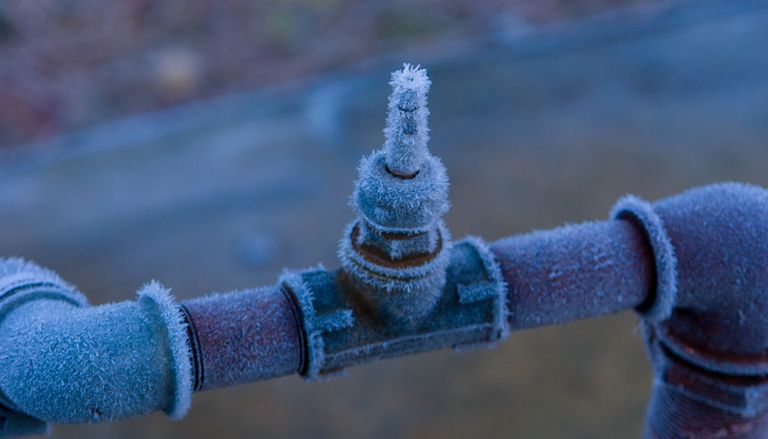Advice for Preventing Frozen Pipes in Cold Weather: Professional Advice
Advice for Preventing Frozen Pipes in Cold Weather: Professional Advice
Blog Article
What're your insights and beliefs about Helpful Tips to Prevent Frozen Pipes this Winter?
:strip_icc()/snow-outdoor-faucet-pipes-4af65d1e5e904fb1aa7bf74071fe5d89.jpg)
Winter can ruin your pipes, especially by freezing pipelines. Below's how to stop it from taking place and what to do if it does.
Introduction
As temperatures drop, the danger of icy pipelines rises, possibly leading to costly repair services and water damages. Recognizing exactly how to avoid frozen pipes is important for house owners in chilly environments.
Avoidance Tips
Shielding at risk pipelines
Cover pipes in insulation sleeves or make use of warmth tape to safeguard them from freezing temperature levels. Concentrate on pipelines in unheated or outside areas of the home.
Home heating strategies
Maintain indoor areas sufficiently warmed, especially areas with plumbing. Open up closet doors to permit warm air to flow around pipelines under sinks.
How to recognize frozen pipelines
Search for decreased water circulation from faucets, uncommon odors or sounds from pipes, and visible frost on revealed pipes.
Long-Term Solutions
Architectural adjustments
Take into consideration rerouting pipes away from outside walls or unheated locations. Include extra insulation to attic rooms, cellars, and crawl spaces.
Upgrading insulation
Purchase high-quality insulation for pipes, attics, and wall surfaces. Correct insulation helps maintain constant temperature levels and lowers the risk of frozen pipes.
Safeguarding Outdoor Plumbing
Garden tubes and outdoor faucets
Disconnect and drain garden hoses prior to winter. Install frost-proof faucets or cover outdoor faucets with protected caps.
Understanding Frozen Pipelines
What causes pipelines to freeze?
Pipelines ice up when revealed to temperature levels below 32 ° F (0 ° C) for extended durations. As water inside the pipes ices up, it expands, putting pressure on the pipeline wall surfaces and potentially triggering them to break.
Risks and damages
Frozen pipes can result in supply of water interruptions, property damages, and expensive repair work. Ruptured pipelines can flooding homes and cause substantial architectural damage.
Indications of Frozen Piping
Identifying frozen pipes early can avoid them from breaking.
What to Do If Your Pipelines Freeze
Immediate activities to take
If you suspect frozen pipelines, maintain taps available to soothe stress as the ice melts. Use a hairdryer or towels soaked in hot water to thaw pipelines gradually.
Verdict
Protecting against icy pipelines needs proactive measures and fast actions. By comprehending the causes, signs, and safety nets, home owners can secure their plumbing throughout winter.
5 Ways to Prevent Frozen Pipes
Drain Outdoor Faucets and Disconnect Hoses
First, close the shut-off valve that controls the flow of water in the pipe to your outdoor faucet. Then, head outside to disconnect and drain your hose and open the outdoor faucet to allow the water to completely drain out of the line. Turn off the faucet when done. Finally, head back to the shut-off valve and drain the remaining water inside the pipe into a bucket or container. Additionally, if you have a home irrigation system, you should consider hiring an expert to clear the system of water each year.
Insulate Pipes
One of the best and most cost-effective methods for preventing frozen water pipes is to wrap your pipes with insulation. This is especially important for areas in your home that aren’t exposed to heat, such as an attic. We suggest using foam sleeves, which can typically be found at your local hardware store.
Keep Heat Running at 65
Your pipes are located inside your walls, and the temperature there is much colder than the rest of the house. To prevent your pipes from freezing, The Insurance Information Institute suggests that you keep your home heated to at least 65 degrees, even when traveling. You may want to invest in smart devices that can keep an eye on the temperature in your home while you’re away.
Leave Water Dripping
Moving water — even a small trickle — can prevent ice from forming inside your pipes. When freezing temps are imminent, start a drip of water from all faucets that serve exposed pipes. Leaving a few faucets running will also help relieve pressure inside the pipes and help prevent a rupture if the water inside freezes.
Open Cupboard Doors
Warm your kitchen and bathroom pipes by opening cupboards and vanities. You should also leave your interior doors ajar to help warm air circulate evenly throughout your home.

As a reader on Prevent Frozen Pipes , I thought sharing that piece of content was really helpful. Enjoyed our write up? Please quickly share it. Let another person check it out. Thanks so much for going through it.
Information Report this page